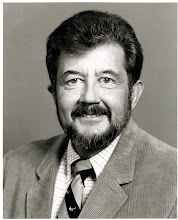After Apollo 11, I was asked by my super boss at the U.S. Geological Survey to take a detail with NASA to help set up the Lunar Sample Program. Though I had been opposed to the Space Program, something happened during Apollo 8 and the flight around the Moon and the Christmas Message. I had an epiphany and followed the adage, "There is no sinner like a converted sinner." I not only ended up buying all the trinkets but became involved with NASA even after my detail to NASA was over.
For example, I joined a Working Group in NASA on "Missions To Comets And Asteroids." that I found even more interesting than the Lunar sample program. When the Chief Scientist at Johnson space Center died (only 40 himself), I was asked to run the Lunar Sample AnalysisPlanning Team (LSAPT) that was the group of scientists that decided which scientist Principal Investigator should get which sample and how much. A lot of scientists felt constrained by this procedure and pronounced LSAPT as "Least Apt."
My detail to NASA concluded just as I was entering my 40s. It is said that most people feel a downer on turning 40, but I felt elated. I looked younger than my age, and I finally felt that I was now an adult. It used to be that when I would enter some bureaucrat's office, I got a look of "Who is this kid?"
Also, I was happy to return to the research that I loved. As my 40s rolled by, I began to notice that something was missing. Not only was less attention paid to my published work by my peers, but some other scientists felt it was all right to borrow from my studies without attribution. Good things happened also. I wrote a Monograph on "Lead Isotopes" has been cited more than 320 times in the scientific literature. It has been translated into Mandarin and Russian plus the Russians gave me a prize in 1976. A paper I wrote on mineral prospect evaluation has been cited nearly 300 times and became overused by the minerals divisions of the oil industry even though I had included cautionary statements. At the end of the 1970s, the grand finale of my studies on the behavior of lead isotopes in nature was published with my colleague Robert Zartman who told me that our paper became overused in China.
In the early 1980s, when I was in my early 50s,, I served as President of the Geochemical Society and gave a presidential address on the Past Is The Key to The Future** It was about at this time that I felt that I was mainly writing papers for myself.*** Also when I submitted a paper to a scientific meeting, I was assigned to Poster Sessions and not oral presentations. Another sign I was viewed as a has-been.
I have to admit, that I went much, much further than I ever dreamed as a child, but I also felt that I deserved so much more. My last scientific paper, published in 2002, has been cited only once. It was clear that I should move on. No sense crying about it. So I started a second career in non-scientific writing.
I have been fortunate to live in the times I do as I have been able to publish two novellas ["Swell Country" and "(All I Wanted Was) a Piece Of The Moon"] and a small book of my writings ("So How About An Asteroid Or Would You Believe A Comet") at no cost to me. These are available for purchase at Amazon as both paperback and online editions. In 2009, I started my blog Reunite Gondwanaland (http://stopcontinentaldrift.blogspot.com/) that has grown to over a thousand items with more than 100,000 page views. These efforts have kept my mind reasonably sharp, and I have lived a pleasant life, since my retirement, that is far longer than I ever dreamed and counting. I feel truly blessed.
For other items in this blog about my career, see:
http://stopcontinentaldrift.blogspot.com/2018/03/fired-by-federal-government-biographical.html
http://stopcontinentaldrift.blogspot.com/2017/05/you-must-wear-dress-biographical.html
http://stopcontinentaldrift.blogspot.com/2014/08/the-tea-cup-seismograph-biographical.html
http://stopcontinentaldrift.blogspot.com/2013/01/working-underground-my-rational-self.html
http://stopcontinentaldrift.blogspot.com/2013/04/you-couldnt-have-been-on-that-plane.html
http://stopcontinentaldrift.blogspot.com/2013/04/you-couldnt-have-been-on-that-plane_19.html
http://stopcontinentaldrift.blogspot.com/2013/04/you-couldnt-have-been-on-that-plane_21.html
http://stopcontinentaldrift.blogspot.com/2011/04/zurich-first-days-biography.html
http://stopcontinentaldrift.blogspot.com/2010/12/muammar-qaddafi-and-me-biographical.html
http://stopcontinentaldrift.blogspot.com/2009/11/you-are-so-lucky.html* https://www.theatlantic.com/magazine/archive/2019/07/work-peak-professional-decline/590650/?utm_source=twitter&utm_medium=social&utm_campaign=share
** Doe, B. R., l983, The past is the key to the future: Geochimica et Cosmochimica Acta v. 47, p. l34l-l354. (Geochemical Society Presidential Address)
Also, see in this blog: http://stopcontinentaldrift.blogspot.com/2014/01/global-housekeeping-challenge-is-issued.html Original in "Geotimes, 1990, pl 6."
*** This feeling seems to be born out by the citation index where papers with 50 or more citations were: 7 in the 1960s, 14 in the 1970s, 4 in the 1980s and 2 in the 1990s. From 4-49 citations there were 9 for the 1960s, 12 for the 1970s, 14 for the 1980s, 3 for the 1990s (out of 19 papers published), and 1 for 2000s (out of two). A paper with my colleague Robert Zartmen published in 1981 garnered 1801 citations and another in 1979 had 711 citations. Thus I would say that interest in my work peaked at just about 1980 when I was only 49.

No comments:
Post a Comment